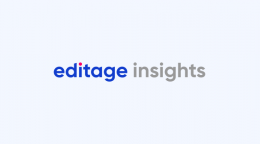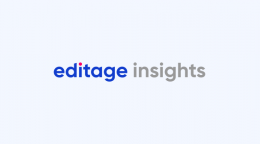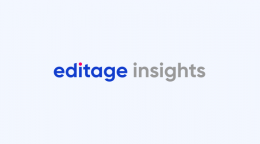Journal indexing 101: Understanding the basics

In order to be known as an authoritative source of scientific information, and to stand out from among many other publications that are crowding the publishing space, journals must increase their visibility, availability, and readership. One of the ways by which journals can achieve this is by getting their publication indexed by one or more leading databases.
Why is indexing essential?
- Indexing will help your journal achieve its main purpose of being accessible to a wide audience.
- Being accessible in turn will improve your journal’s reputation as a reliable source of high-quality information in your field.
- Database research is the first activity researchers undertake as part of their study, and they naturally look to established, well-known databases. Thus, being indexed in a known database in your field will help increase your journal’s readership.
How does indexing work?
Once a journal is indexed by a database, it is immediately made available to all users of that database. Some databases index titles, some index full articles while some others index only the abstract and/or references. There are several abstracting and indexing services available today. Some are affiliated with institutions (e.g., PubMed maintained by the United States National Library of Medicine at the National Institute of Health) while some are provided by publishers (e.g., Scopus by Elsevier). Irrespective of which institution the database is affiliated with, you will need to formally apply for inclusion in the database of your choice.
How should you go about getting your journal indexed?
- Choose the right database
Just as journal editors do not consider manuscripts that lie outside the scope of their journal, indexing companies do not consider journals that lie outside their scope. Choose a database that indexes journals from your field. It is also important to understand the features the database provides. Some databases only index abstracts, where users will be able to view relevant abstracts of articles published in your journal. Some get professional indexers to scan entire manuscripts and index keywords. Some others also include citations in their indexing system. Knowing how exactly your journal will be visible and accessible to the user will also help you choose the right journal indexing database. Detailed information about how the database works will be included on its web page.
- Understand the selection process followed by the database you have chosen
Some general criteria that databases use to evaluate a journal’s suitability for indexing are quality of content published, publishing timeliness, and journal workflow and processes. Typically, to get indexed, a journal has to submit a formal application to the database and provide relevant documents and evidence supporting its application. If the journal meets all criteria, it gets indexed. The process of getting indexed is similar to manuscript submission and peer review: journals submit their documents and wait for their application to be reviewed by the database. If your journal does not meet the criteria required for indexing, you may need to introduce some changes in your journal workflow to make sure that your journal is eligible.
- Ensure your journal processes are smooth and efficient
Make sure your journal meets the basic publication standards required by the industry (author friendly systems, smooth and timely peer reviews, easy accessibility, etc.). In your application it should be clear that your journal is worthy of being indexed by the database you choose.
- Approach a company with multiple databases
Companies like Elsevier and Thomson Reuters offer several indexes that cater to journals. In such cases, it might be a good idea to check the full list of products or services offered and apply to those that are relevant to your journal.
Where should you get indexed?
As we advised the journal Clinical Endoscopy, it is essential to choose an indexing company/database that is in line with your journal’s scope. Here’s a list of common databases you could explore.
- Scopus: Managed by the publishing company Elsevier, Scopus indexes journals from the fields of science, technology, medicine, social sciences, and arts and humanities. It also provides research analysis and tracking tools.
- EMBASE (Excerpta Medica database): Also maintained by Elsevier, EMBASE is a biomedical database accessed by researchers, information managers, regulatory specialists, clinicians, medical librarians, educators and physicians. (Elsevier maintains other databases such as EMcare and Engineering Village.)
- PubMed: Maintained by the United States National Library of Medicine, PubMed covers biomedical literature from life science journals, and online books. It also accesses the MEDLINE bibliographic database of reference and abstracts.
- SCIE (Science Citation Index-Expanded): SCIE is a product by Thomson Reuters. It covers journals from a range of scientific and technical fields. It also provides some data analysis options.
- BIOSIS Citation Index: Also by Thomson Reuters, BIOSIS covers a range of biological and biomedical sciences.
- DOAJ (Directory of Open Access Journals): DOAJ is an online directory that indexes and provides access to open access, peer-reviewed journals covering history, religion, geography, language and literature, etc.
- Ovid: Ovid is a branch of Wolters Kluwer. Ovid databases cover a wide range of topics including clinical medicine, pharmacology.
- EBSCO Information Services: The EBSCO database includes titles compiled by the company as well as journals from other databases/publishers such as Medline and EconLit. The company also maintains Academic Search Complete, which covers the full-text of journals.
- BioOne Abstracts and Indexes: These provide access to peer-reviewed research in the biological, ecological, and environmental sciences.
- Additional lists:
To compare one or more databases at once, you could also check the lists below:
- Nature’s database list
- BioMed Central’s list of databases
- List compiled by the University of Miami’s libraries
- List compiled by African Journals Online
Please note: This list has been prepared based on our understanding. Editage does not recommend one database over another. You would still need to understand each in detail to choose one or more of these services that would be best suited for your journal.
Should you stop after getting your journal indexed in one database?
As was the case with the journal Clinical Endoscopy, journal editors often wonder whether it is a good idea to seek inclusion in multiple databases or academic/scientific search engines. The answer is “Yes, of course!” The more platforms your journal is visible on, the greater is the opportunity you have to build a solid reputation in your field.
(You might also be interested in reading Go global: 6 great tips to get your regional journal indexed in SCIE.)
Published on: May 20, 2015
Comments
You're looking to give wings to your academic career and publication journey. We like that!
Why don't we give you complete access! Create a free account and get unlimited access to all resources & a vibrant researcher community.











